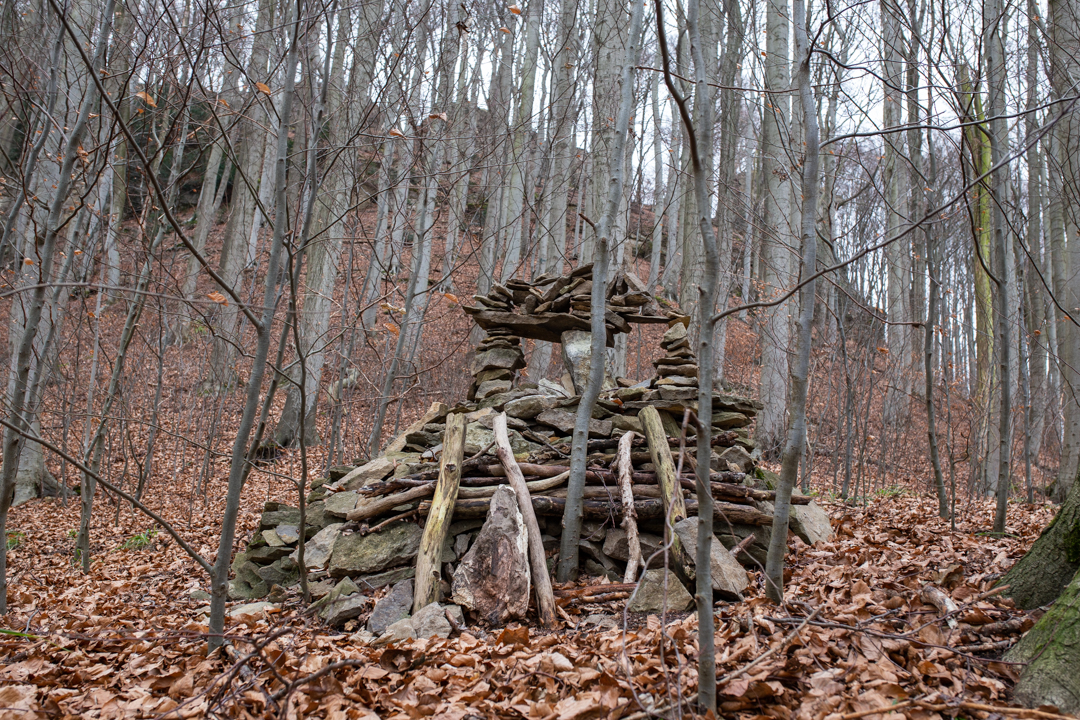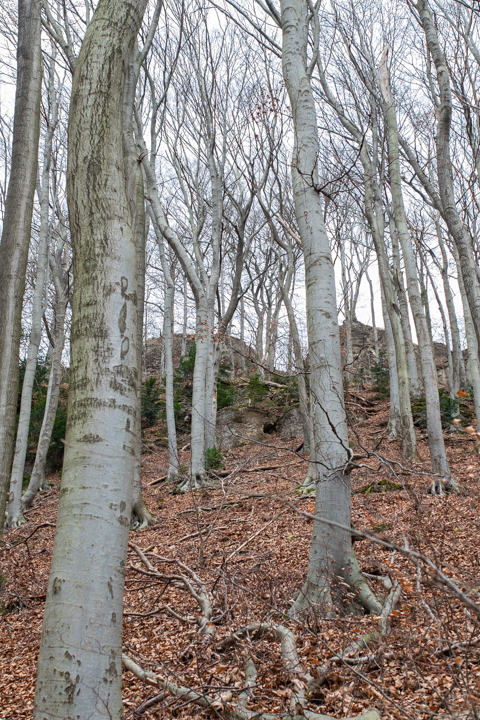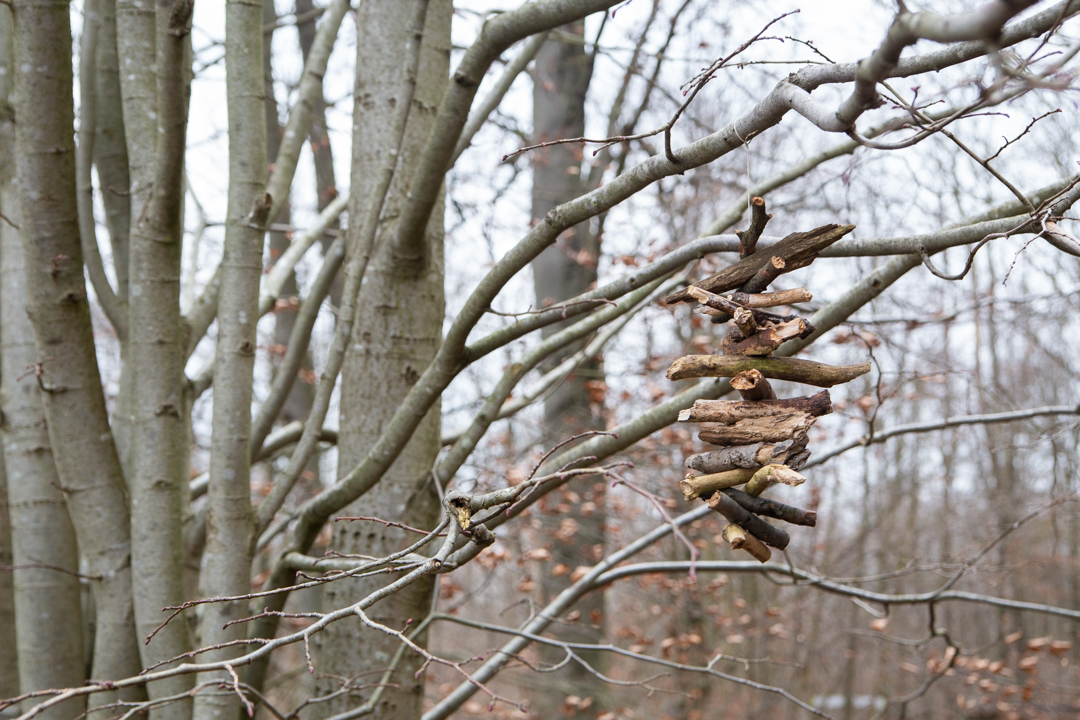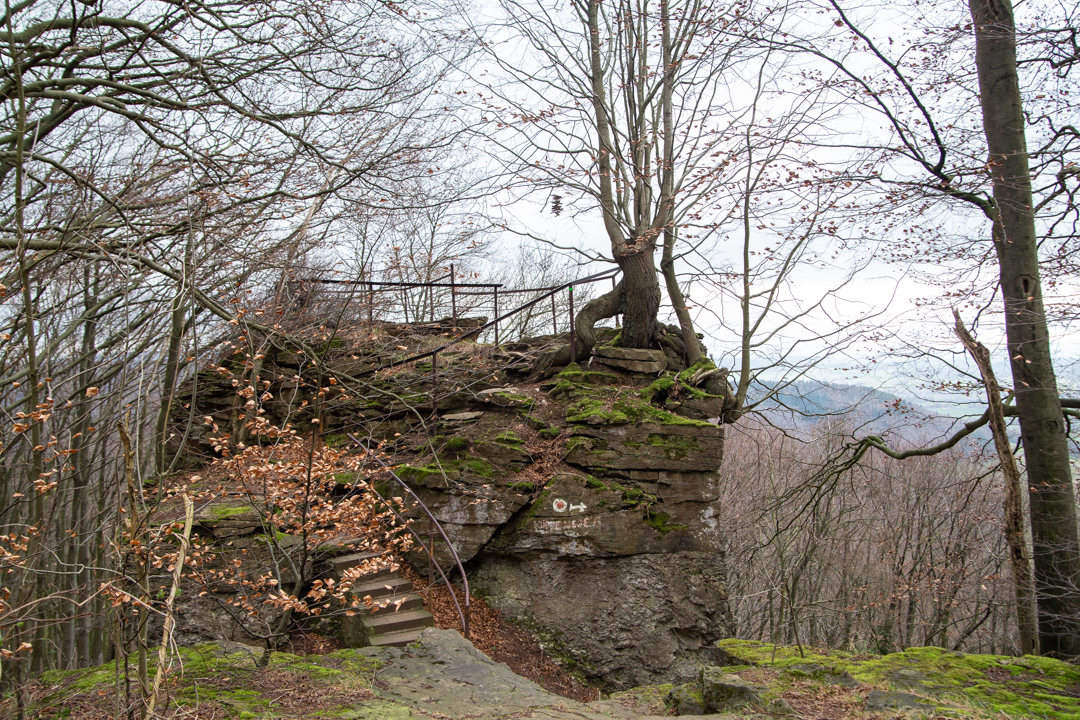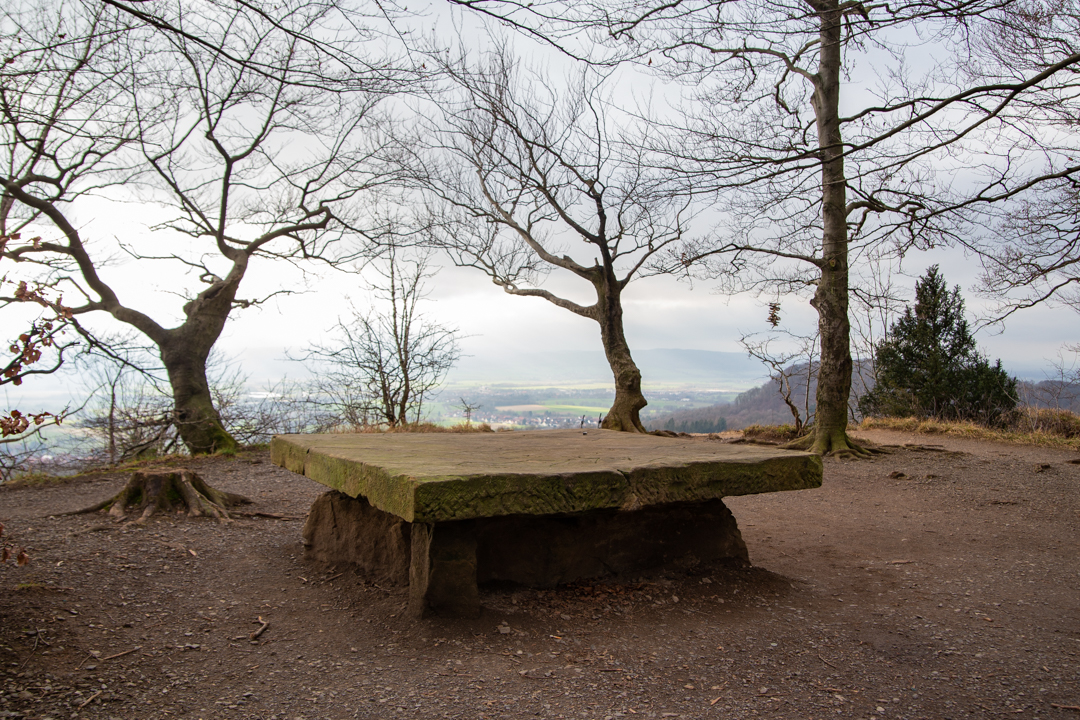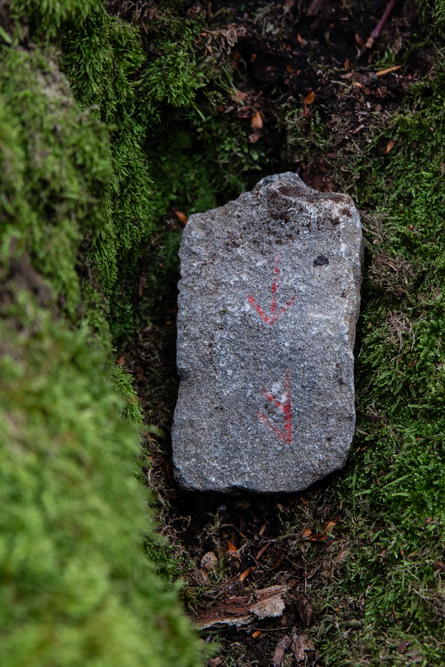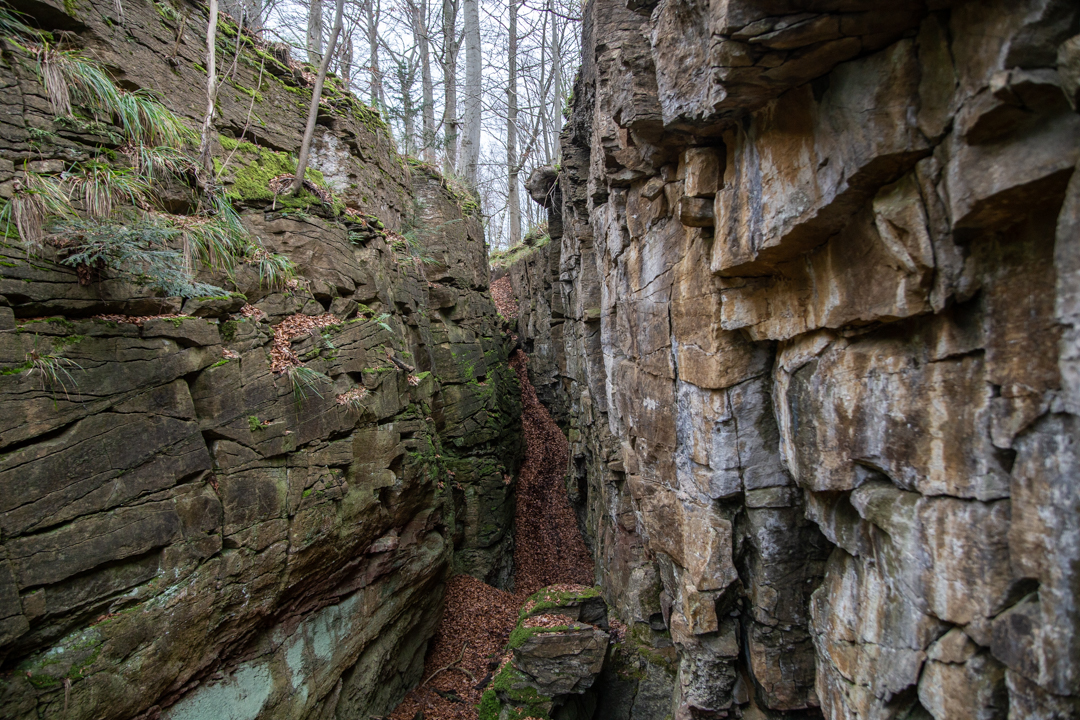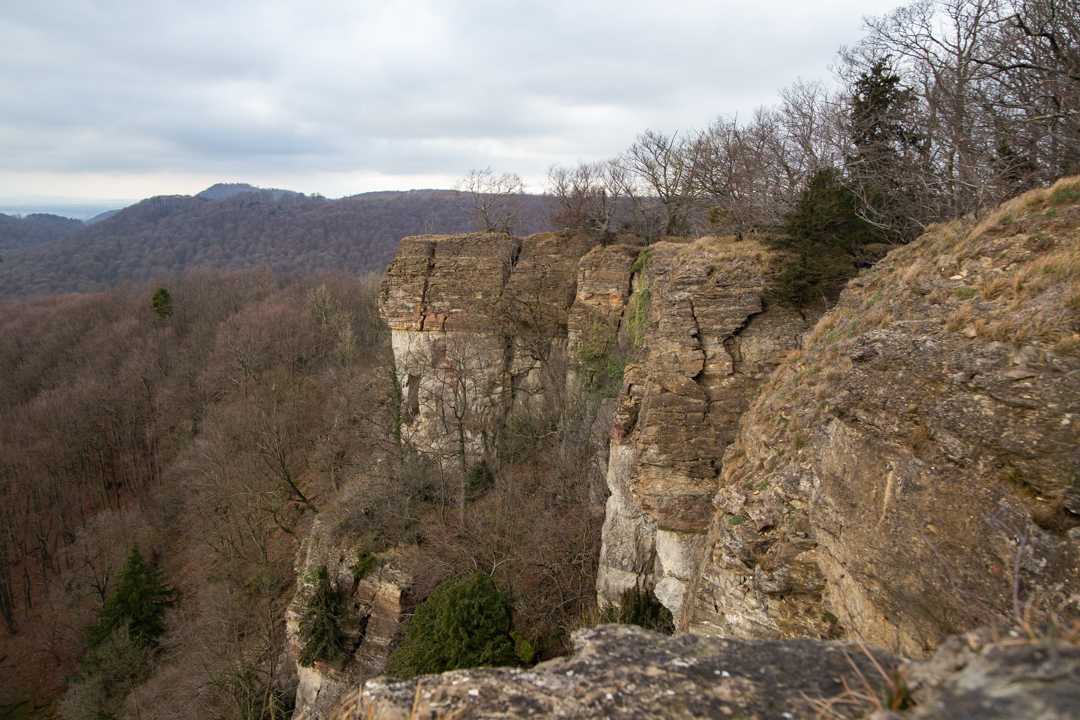Cult site Hohenstein (2019)
The Hohenstein in Sünteln is an approx. 340m high mountain in the west of the Weserbergland. The 40m high cliffs are the highest in Lower Saxony. Due to the magnificent view, this is a popular excursion and hiking destination. In addition, this place is a cult site, as it was an ancient pagan place of assembly, judgment and sacrifice. The Cheruks and Saxons worshipped the gods here at that time. The mountain is said to have been dedicated to the god “Donar” and the cult of the spring goddess “Ostara” is said to have been particularly intense. This is proven by an old rune tablet made of clay, which was found at the foot of the cliffs around 1500. A replica of this tablet can be seen today in the Marburg Museum.
Numerous myths, legends and fairy tales revolve around the three rock formations “Teufelskanzel”, “Grüner Altar” and “Hirschsprung”. For example, the Pentecost carnations on the rock faces are said to have received their red color from the much blood of the sacrificial offerings. This place seems to have a special attraction even today. Many traces indicate that the Hohenstein is said to have spiritual properties and that people use it as a “place of power”. Torch remains, homemade pagan wind chimes, runes, carvings – all this can be found on the cliffs of the Hohenstein. It is unclear whether followers of nature spirituality, such as those of neopaganism, can be found here, or whether they are Germanic-believing communities.

